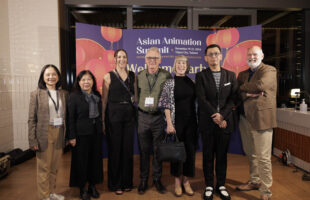According to Starcom Singapore’s October 2008 TV Trends Update, terrestrial TV dominates with about two-third of total audience viewing share in Singapore. However, its share has been decreasing over the years – 76 percent in 2001 to 61 percent in 2007 (down 15 percent). With wider channels selection, flexibility in packages and lower subscription rates, audiences in Singapore are indeed spoilt for choice. There were 511,000 households in Singapore subscribing to StarHub TV as at end June 2008. This is 33,000 more households, as compared to 478,000 households as at end June 2006. StarHub noted that the number of channels offered by StarHub has grown significantly over the years. Ong Bee Lian, StarHub’s head of cable TV services said, “We definitely see the increased content choices as a good thing for consumers as they can now not only enjoy more of their favourite genres but niche programming as well.” “The beauty of cable is that there are alternative time slots for viewers to choose from, if they missed the first run of a particular programme or if it clashes with another programme that they want to watch. With HubStation, viewers are empowered with even greater flexibility and control, they can record a programme while watching a different programme on another channel and watch the recorded programmes anytime they want,” Meanwhile, StarHub’s telco and now TV rival, Singapore Telecommunications (SingTel) is determined to lead in the country’s entertainment space, with the promise of more innovations – in both content and features that will bring them the best in the market. Low Ka Hoe, director of mio TV & content, SingTel said, “As customers become more value-conscious as the cost of living increases, mio TV offers them value for money by allowing them to watch only what they want without being required to subscribe to a basic tier package. This means that they have instant access to mio TV’s on-demand content, which includes a huge library of movies, documentaries, series, childrens’ content and much more. They are also not required to pay a rental fee for the mio TV set-top box – which is HD-ready – and our minimum monthly spend is only S$16.05 (US$11.20).” mio TV currently offers the widest range of on-demand content, and as of September 2008, mio TV’s Season Pass service has over 50 top US series available as soon as 24 hours after their US premiere. mio TV is the first pay TV operator in the world to offer the largest volume of unlimited on-demand viewing by subscription of the latest seasons of popular American TV series debuting in US from September this year such as Grey’s Anatomy, Lost, Criminal Minds, Prison Break, Bones, 24, Ugly Betty, Without a Trace, Terminator: The Sarah Connor Chronicles, Supernatural, Samantha Who? and many more. In addition, SingTel was the first pay TV operator in Singapore to offer Taiwanese dramas and variety programmes in their original Hokkien language and are in the process of acquiring more such content. “We will be announcing more on-demand programming from China, Japan, Korea and Taiwan,” added Low. Many of the movies on mio TV are available on the same day as their DVD release, and arrangements with content partners allows SingTel to bring in the latest Cantonese drama serials as soon as one month after their Hong Kong release. Currently, the most watched channel over terrestrial TV in Singapore among those aged 15 and above (P15+) is MediaCorp’s Chinese-language Channel 8, with 51 percent viewed TV yesterday and 68 percent watched TV within the past week. On the other hand, the top-three most watched channels among P15+ and PMEBs within the past week on cable TV are Discovery (24 percent), National Geographic (21 percent) and Animal Planet (18 percent) (Nielsen Media Research figures; provided by Starcom Singapore). In addition, MTV Asia is also highly watched by the youth segment, aged 15 – 24. Singapore’s top 10 highest-rated programs are also from Channel 8, being dramas, at average 11-23 percent rating for various audiences with broadcast of major events like the Beijing Olympic Games 2008-Opening/ 2008 Formula 1 Race/ National Day Parade 2008 topping the viewership chart (July to September 2008 TNS figures; provided by Starcom Singapore). Singaporeans’ appetite for special events programmes are also reflected on other channels. The top 30 programmes (P15+) on MediaCorp Channel 5 from July to September 2008 also include broadcast of 2008 Formula 1 Singapore Grand Prix and the Beijing Olympic Games 2008 – Opening Ceremony. However, omitting special programmes from the list, it is clear that movies dominate the top 20 list, said Starcom. Extending the list to top 30, locally produced comedy programmes are relatively well received. English-language Channel 5’s top 10 programmes (P15+) are (in order of ranking) – Don’t Forget the Lyrics (series 1); Fear Factor (series 6); America’s Got Talent (series 3) and The Showdown. US produced shows (especially game shows) are extremely well received in the Singapore market. Eight out of 10 of the top watched programmes on Ch 5 are from the US. The Showdown is the only locally produced game show that makes it to the Top 10 Variety show chart (July-September 2008 TNS figures). Top watched dramas on channel 5 are mainly locally produced. Dramas like Incredible Tales 5, Sense of Home and Parental Guidance 2 topped the channel 5 (Drama) – Top 10 Programmes (P15+) from July to September 2008. Locally produced drama series are also well-received by Channel 8’s audiences, with 9pm drama achieving higher viewership. Locally produced variety shows (8pm) are relatively well watched by Channel 8 audiences. In addition, the top 10 variety shows on Channel 8 are all locally produced. Variety shows like New Foreigner in Town, Star Chef 2 and Say It If You Dare 4 topped the list for the months of July to September 2008 (source: TNS). Top rated acquired programmes shown on channel 8 are mainly from Hong Kong, Taiwan and China. Relentless Justice (Hong Kong); Strange Tales of Liao Zhai 2 (China) and Delicious Food All Over China (series 5) from Taiwan topped the Channel 8 (Acquired Programmes) – Top 30 (P15+), says Starcom Singapore. Starcom Singapore further noted that selected dramas and movies from Hong Kong usually fetch higher ratings. Better performing programmes from Taiwan are usually of the variety genre, while selected dramas from China are also able to achieve relatively good ratings. Acquired movies and dramas from Hong Kong are also top watched on MediaCorp’s Channel U. According to Starcom Singapore, channel U’s top 30 programmes (15+) from July to September 2008 are When Rules Turn Loose and The Academy In addition, Korean dramas and Taiwan variety shows are relatively well received. According to Chang Long Jong, MediaCorp deputy CEO (Television), the TV landscape in Singapore has seen the emergence of new platforms and channels in recent years and hence, more content choices for TV audiences. Despite facing more competition, Chang notes that MediaCorp’s free-to-air channels continue to perform as strongly as before. “For example, our channels 5, 8 and U still attract as many viewers during primetime (7pm to 12 midnight) as they did three years ago. Compared to 2001, all the 3 channels have achieved growth in primetime viewership. Currently, MediaCorp’s channels enjoy about 70 percent of total TV audience share during primetime,” said Chang. Chang noted that local Chinese dramas continue to top the ratings charts, constantly reaching out to more than 1 million viewers (P4+). Major ‘live’ events, including the National Day Parade, the Beijing Olympics Opening and Closing Ceremonies, and the 2008 SingTel F1 Singapore Grand Prix, also achieved very high ratings, reaching out to close to 2 million viewers aged 4 and above. “Apart from local dramas, local variety and game shows, comedies and reality shows remain the favorites of viewers. HK-TVB and Korean dramas are also popular, and US blockbuster movies, drama series and reality shows like King Kong, Ghost Whisperer and Don’t Forget The Lyrics still enjoy very good viewership,” concludes Chang. According to the latest 2008 Nielsen Media Index study, people in Singapore are a multimedia-savvy crowd with two thirds (66 percent) of the population aged 15 and above tuning into at least three to five kinds of media everyday, even as more complement their media mix with the internet. Faced with options of newspapers, terrestrial TV, cable TV, radio and the internet, only nine percent rely solely on a single source, with the higher income and better educated groups tuning into a more diverse range of media. The latest Nielsen Media Index study interviewed a nationally representative sample of 4,717 Singapore population aged 15, over a continuous period from July 2007 to June 2008. The Nielsen Media Index revealed that a third (31 percent) of Singapore’s population consume three types of media daily, a quarter (25 percent) consume four, while one in 10 are consumers of all five. Of the bigger group who consume three media, the traditional mass media consumers of newspapers, terrestrial TV and radio make up the dominant group (32 percent of three media users). The next biggest group are those who consume internet with newspapers and terrestrial TV daily (23 percent of three media users), who also tend to be younger, better educated and affluent. “Nielsen’s findings show that traditional media remain the primary choice for the majority of Singapore’s population. However, the internet has clearly established itself in our daily lives. A sizable proportion of the population now counts online activities as a permanent fixture in their daily media palette alongside newspaper reading and terrestrial television viewing,” said Rebecca Tan, executive director for Nielsen Media Research, The Nielsen Company Singapore. For television, eight in 10 (down five percentage points to 78 percent) continue to view terrestrial television everyday. MediaCorp’s Channel 8, widely watched across age groups, maintains pole position among all the local stations albeit a slight drop (down two percentage points to 49 percent) in viewership. Chinese counterpart, Channel U retains the second spot at 32 percent, although registering a slight dip (down 3 percentage points to 32 percent). Channel 5 maintains its viewership at 29 percent. The English entertainment channel is the top local channel watched yesterday by over a third (36 percent) of private dwellers in Singapore. Channel News Asia’s daily delivery of local and global news garners an audience of more than one fifth (down two percentage points to 22 percent) and is the top channel watched amongst PMEBs and those earning over S$5,000 (US$3,380). Of a niche interest, vernacular channels Central and Suria both achieved eight percent of viewership. The terrestrial TV landscape in Singapore has shifted over a very short space of time, influencing the viewing patterns of people today. Cable television and the newly-introduced paid internet TV offerings have to a certain extent affected TV viewing with their niche content and flexible viewing options like viewing on-demand. The internet further poses a strong challenge with its wealth of available entertainment content. Still, terrestrial TV is the media that reaches the mass public. “With more people on the move and online, media owners are also following suit. For example, MediaCorp offers MobTV online and has also partnered telco players to deliver TV content via the mobile phone,” revealed Tan. Yesterday viewership for cable television held at 37 percent, while continuing its upward trend in past week viewership to hit 49 percent, with half the population having access to cable (48 percent). The internet continues its rise as a key medium consumed by people in Singapore, as usage among the population grows year on year – with almost six in 10 considered average daily users. Internet usage yesterday grows five percentage points from last year to 56 percent. Weekly internet usage also rose correspondingly (+5 percent) to 63 percent. Apart from more common usage like email and general surfing, the internet is also fulfilling entertainment and social needs in Singapore, with a quarter of people surveyed watching a video clip, movie or TV program on the internet in the past month. A fifth listened to music and played online games, while one in 10 said they participated in social networking sites. News seekers in Singapore are also going online for regular news feed. According to the Nielsen Media Index, online daily readership for the past week has grown slightly to nine percent this year. “The internet has become an essential space for traditional news media to leverage. This is seen in the case where hardcopy readership for Straits Times has held up at 39 percent, while separately attracting three percent of readers online of which one percent read exclusively online. And according to Nielsen Online’s Site Census, unique browsers for Straits Times Online has gone up to 77,000 on average per week,” said Tan. While traditional media remains strong in Singapore, media owners know the importance of planting their presence in the virtual world. Nielsen Online’s Market Intelligence shows that among its sites tracked, SPH’s AsiaOne Networks, which includes AsiaOne, SPH’s online papers and news portals like STOMP and OMY.sg, emerged top with over 431,000 unique browsers weekly on average. “With the multimedia savvy consumer these days, having an online presence is increasingly seen as a way to increase the touch points with one’s audience,” Tan added. Indeed, mobile devices take centre stage in the lives of affluent Asians. According to the Synovate PAX 2008 survey that measures media habits and product consumption of Asia’s elites, fifty six percent of wealthy Asians use their mobile devices every week to take pictures while more than a quarter (31 percent) watched video clips through their mobile phones, Personal Digital Assistants (PDAs), BlackBerrys, smart phones and portable media players. Synovate’s research director Clare Lui said high ownership figures of such devices indicated that affluent Asians were constantly on the move and have gone beyond the need to just stay connected. “Mobility has become the new creed of Asian elites and they are using the ‘third screen’ – screens on mobile phones, PDAs, MP4s and other personal portable devices – for connectivity, information and entertainment,” said Lui. Findings from the PAX survey revealed that ninety five percent of Singaporean elites used their mobile devices to send and receive text messages (the region’s highest) while Taiwanese (84 percent) lead the way when it comes to chatting and instant messaging on the go. Affluent Taiwanese were the region’s biggest information seekers, using their mobile devices to read news alerts and updates as well as to search for financial and business information. Wealthy Koreans turned out to be the biggest sports junkies with over half (54 percent) using their mobile devices to receive sports results and sports related information. Elite Thais (57 percent) were the most likely across the region to watch live TV on their mobile devices followed by Taiwanese (53 percent), Koreans (50 percent) and Singaporeans (37 percent). “Asian elites were also expressing themselves through their mobile devices by reading (8 percent) and writing (3 percent) moblogs while wealthy Koreans (20 percent), Malaysians (18 percent) and Thais (18 percent) enjoyed making video clips,” Lui added. Synovate’s executive director for media, Steve Garton advised marketers to take advantage of the ‘third screen’ as an extended platform to reach Asian elites. “In today’s environment, marketers should be exploring both traditional and digital platform strategies to reach affluent Asians,” said Garton. Garton further stressed the importance of digital platform experiences during the economic downturn as affluent Asians consume more news. “More people are relying on the internet, and they’ll more likely be multi-tasking and wanting real-time news. There won’t be a transfer – rather, there will be a need to access more news,” said Garton. TVAplus
Ad – Before Content
Related Articles
Spingo Continues Global Push into the Americas as O4 Media Signs Option Agreements with LA-based 5X Media and Brazilian outfit LaReina Entertainment
Keshet boards Red Alert with producer Lawrence Bende
FIFTH SEASON inks strategic partnership with Front Street Pictures for TV movies slates
Taiwan Hosts Asian Animation Summit for the First Time Bringing Together Major Buyers Netflix and Warner Bros.
Sphere Abacus appoints Toby McCathie as Finance Director
Hello, Love, Again becomes 1st Filipino film to hit 1 Billion Pesos in World Wide Box Office







